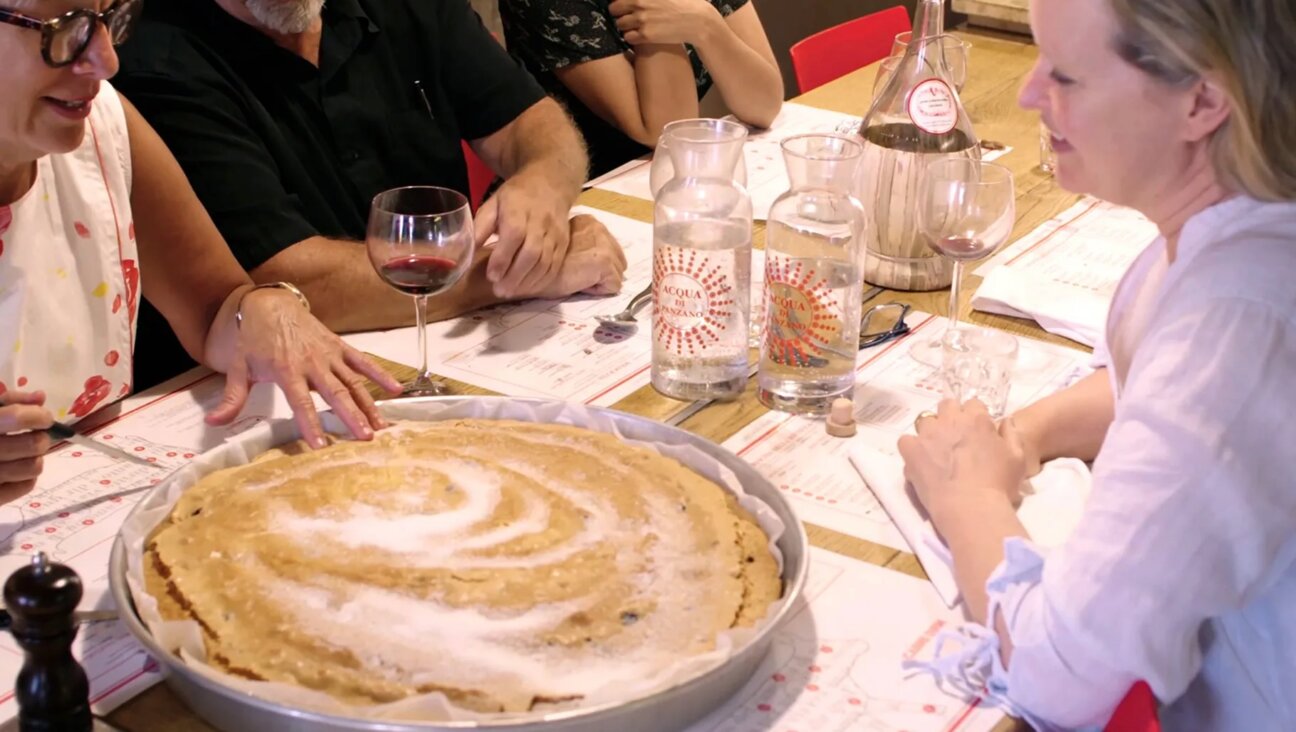Recipe Redux: Temple Emanu-El Brisket 6.0

Graphic by Angelie Zaslavsky
You’re reading the recipe below right — it’s full of strikeouts and add-ins that match the red-pen amendments the author made to the recipe in her own cookbook (above). After making the original at least 20 times, she feels she’s improved on what was already near-perfection. Photograph by Stephanie Pierson
Serves 8 to 10
One 4- to 5-pound (get a 5 or 5 ½ lb one if you want leftovers and who doesn’t? Just make sure your casserole is big enough) beef brisket (Please get grass-fed, if possible, for maximum flavor and for humanely-raised beef — and have the butcher leave on a lot of fat. You can always skim off the fat later but you can’t add it once it’s off. Grass-fed briskets tend to be lean. Too-lean brisket dry out. Some butchers do take off most of the fat, thinking you won’t want to pay for the fat and/or because they don’t realize how vital it is to have it.)
2 teaspoons garlic powder
1 teaspoon paprika
Kosher salt and freshly ground black pepper
4 large onions, peeled and cut into eighths
Two 14-ounce cans jellied cranberry sauce, sliced
1) Sprinkle both sides of the brisket with the garlic powder, paprika, and salt and pepper to taste. Tightly cover the brisket with plastic wrap and refrigerate for two days. (Uh oh — I am usually in such a hurry and holiday tizzy that I don’t get around to doing it two days before. Or any days before. )
2) When you’re ready to finish the dish, preheat the oven to 500° F. (That is way too hot for my city apartment — I am afraid the kitchen would blow up. I’m afraid of bats and lightening, too. So I preheat it to 450˚F.)
3) Unwrap the brisket, place it in a roasting pan, (it’s really a casserole dish with a tight seal) and roast for 20 minutes (That scares me to death — I can’t imagine the brisket wouldn’t overcook at 20 minutes a side. So I roast/brown it in the oven for about 10 minutes a side.) Remove the pan from the oven and decrease the temperature to 350° F. Place the onions under and around the brisket, then cover the top of the meat with the cranberry sauce slices. Tightly cover the pan with heavy-duty aluminum foil (if you do have a tight-fitting lid on your casserole — and I do — I don’t see the reason for aluminum foil) and cook until fork tender, about three hours. (Because of the longish roasting/browning step, my Rosh Hashanah brisket actually cooked in under 3 hours. And it was over 5 pounds. So check it earlier.)
4) Remove the pan from the oven and allow the brisket to cool. Transfer the brisket to a cutting board, trim the fat, then slice the meat against the grain to the desired thickness. (If you slice it too thin, the slices will fall apart when you are ready to heat it up and serve it.) Return the slices to the pot, overlapping them at an angle (I now think it’s just: Make sure the slices are all fully covered in the sauce.) so that you can see a bit of the top edge of each slice, cover the pan with foil, (put on the lid) and refrigerate overnight.
5) The next day, remove any congealed fat from the top of the sauce. Heat the brisket, covered, at 350° F (Don’t ever ever turn your oven up any higher than 350° F to braise your brisket — it will be like a sweat lodge for your brisket and it could definitely dry up. Lots of recipes call for 325° F.) for 20 minutes, then uncovered for another 20 to 30 minutes until hot and the sauce has reduced a bit. (The notion of reheating it for 40-50 minutes seems excessive to me now. Further, I am not a fan of uncovering the brisket in the oven. When I am ready to serve my brisket, I reheat it slowly on the top of the stove.)
6) Serve with the sauce. (Oh, and because I like a smooth sauce better than a rough one, I put the sauce in the blender. Which also seems to thicken it and kind of silken it. Braised brisket is never really a pretty dish but this helps. It looks way less homely.)























